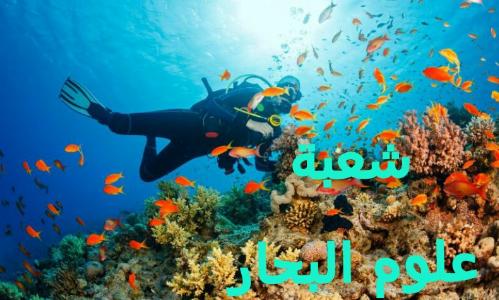Cytogenetic and Teratogenic Effects ofCadmium Chloride on Swiss Albino Mice
يعتبر كلوريد الكادميوم Cadmium chloride مادة كيميائية هامة من المعادن الثقيلة ذات انتشار واسع التي تهدد البيئة وتسبب تسمما عند تراكمه داخل جسم الكائنات الحية مما يسبب تلوثا للبيئة وقلقا عالميا. تكمن أهمية هذه الدراسة (سلسة من التجارب المعملية) في معرفة واكتشاف مدي التأثير الوراثي الخلوي والتشوهات الذي يسببها كلوريد الكادميوم بعد حقنه في فئران التجارب المعملية البيضاء (Swiss albino mice). جهزت مجموعات من فئران التجارب أعمارها تتراوح بين 8-12 أسبوعا و قسمت إلي مجموعات و حقنت داخل الصفاق (cavity Intraperitoneal) بجرعات مختلفة من كلوريد الكادميوم (1, 3, 5 مليجرام ̷ كجم) مذاب في محلول ملحى من وزن الحيوانات علي التوالي, أما مجموعة السيطرة (Control) فعولجت بمحلول ملحي فقط. بعد انتهاء فترة المعالجة, قتلت الحيوانات بخلع الفقرات العنقية. و أستخلص نخاع العظم وأخذت منها مسحات حوالي 2000 كريه دم حمراء متعددة الكروماتينPolychromatic erythrocyte حللت إحصائيا باستعمال اختبار (t- test). أثبتت هذه الدراسة أن تكرار النويات في خلايا متعددة الكروماتينMicronuclei in polychromatic في خلايا الحيوانات المعالجة أظهرت زيادة عند مقارنتنا بقيم مجموعة السيطرة. كانت نسبة (%) تكرار Micronuclei in polychromatic erythrocytes 0.46 ,0,68 و0.97 للجرعات1, 3, 5 مليجرام ̷ كجم وزن الجسم من كلوريد الكادميوم علي التوالي. بينما كانت النسبة في حيوانات السيطرة (0.25) حيث كانت الزيادة في تكرار النويات في خلايا طبيعية الكروماتين Micronuclei in normochromatic cells بنسبة 0.12 في مجموعة السيطرة و وصلت الزيادة إلي 22.0, 33.0 و0.45 في الحيوانات المعالجة بالجرعات 1, 3, 5, مليجرام ̷ كجم كلوريد الكادميوم على التوالي و تبين أن هذا المركب سبب زيادة طردية مع زيادة الجرعة وكان الاختلاف إحصائي معنويا (p˂0.01). أثبتت سلسلة التجارب التي أجريت لتقييم الاضطراب الوراثي الخلوي لكلوريد الكادميوم في الخلايا الجرثومية في ذكور الفئران السويسرية البيضاء (Swiss albino mice) بعد حقنها بجرعات مختلفة داخل الغشاء الصفاقى ب(Intraperitoneal cavity) 1, 3 و 5 مليجرام ̷ كجم من وزن الجسم. أوضحت هذه التجارب بان المادة سببت اضطرابا صبغيا في الخلايا الجرثومية في مرحلة diakinesisنتج عنها شذوذ صبغي (autosomal univalent) مثل ,aneuploids ,sex-chromosomal univalent polyploidy وtranslocations. أوضحت هذه الدراسة بان الخلايا الجرثومية حساسة جدا لكلوريد الكادميوم مما سبب في قتل عدد من الخلايا و انخفاض واضح في عددSpermatocytes عند الجرعات 1, 3 مليجرام ̷ كجم و لوحظ قتل كامل لهذه الخلايا عند الجرعة 5 مليجرام ̷ كجم. كشفت هذه النتائج بأن التأثير الأساسي لكلوريد الكادميوم على مادة (zinc) المستعملة من قبل خلايا (spermatogonia) بالإضافة إلي تثبيط تخليق المادة الوراثية (DNA) في خلاياspermatogonia.درس التأثير الوراثي الخلوي لكلوريد الكادميوم على نخاع عظم الفئران المعالجة والمراقبة. لكل تركيز تم دراسة حوالي 200 خلية في الطور الاستوائي (metaphase) لمعرفة أنواع الشذوذ الصبغى مثل chromatids,,gaps breaksوcentric fragments. فالجرعة العالية لكلوريد الكادميوم (5 مليجرام ̷ كجم) سببت اضطرابا في التركيب البنائي لصبغي, الكروماتيد أو كسر في الصبغى و تبادل . وتشير الدراسة أن الاختلاف في حدوث التأثير الوراثي الخلوي لكلوريد الكادميوم للحيوانات المعالجة و السيطرة كانت معنوية (p
سمية مصطفي اللموشي (2011)
Publisher's website











